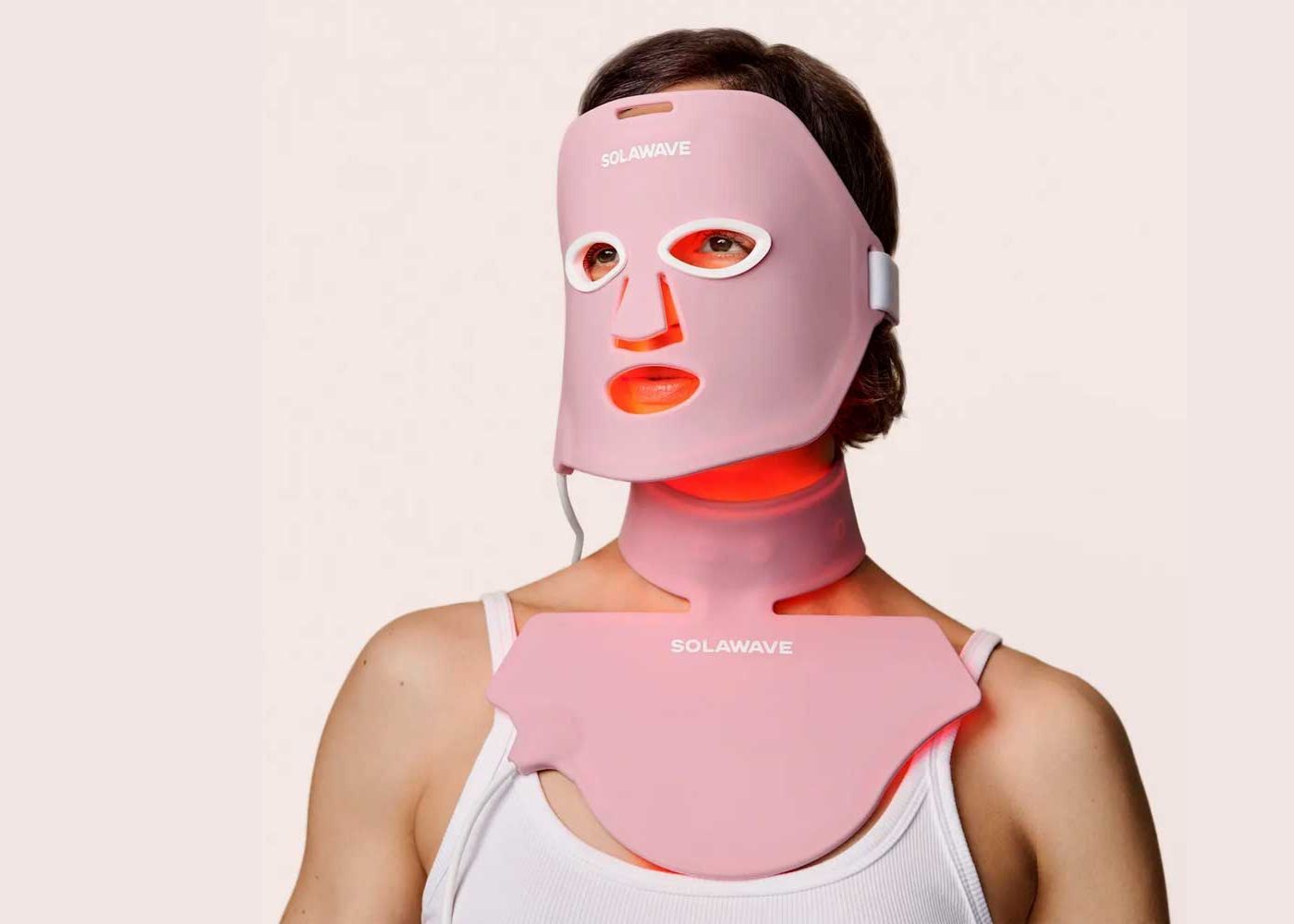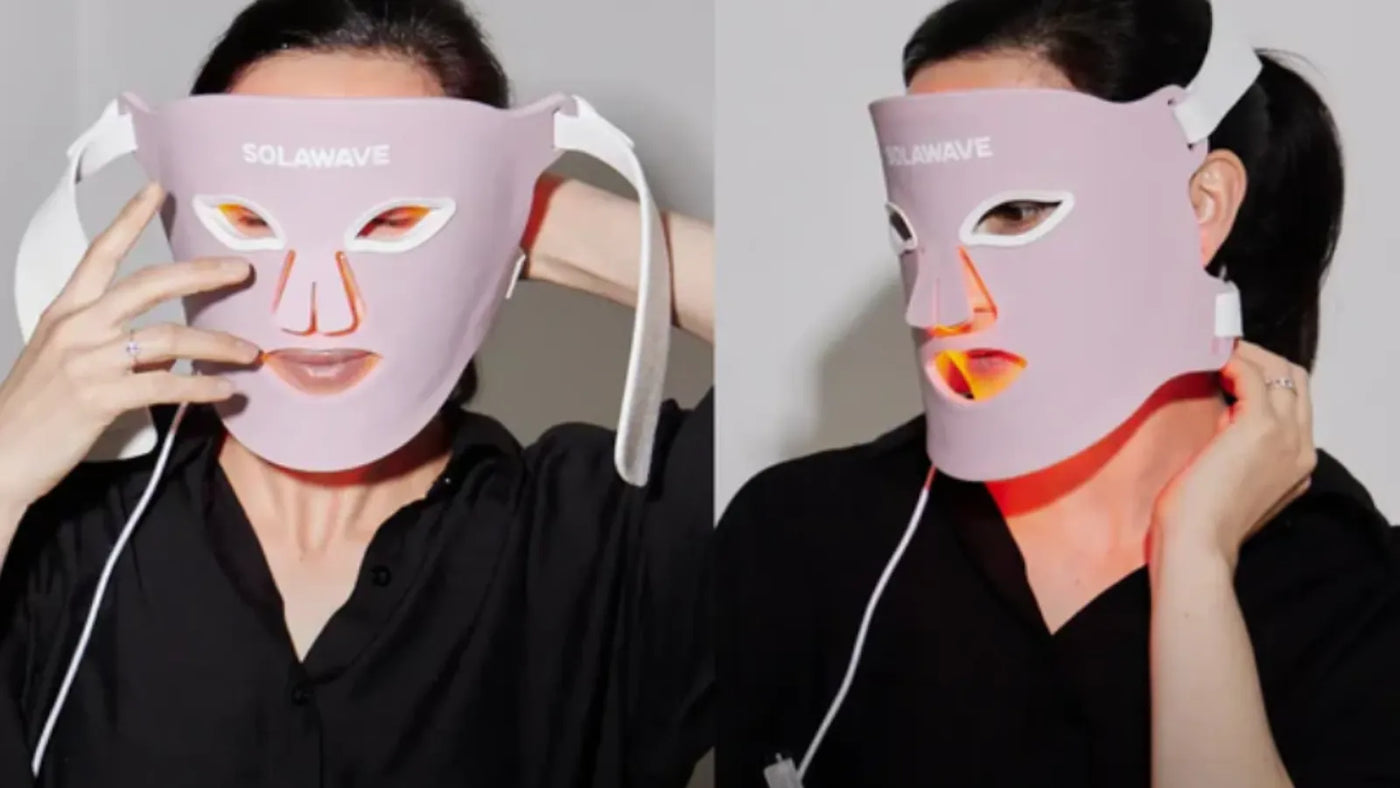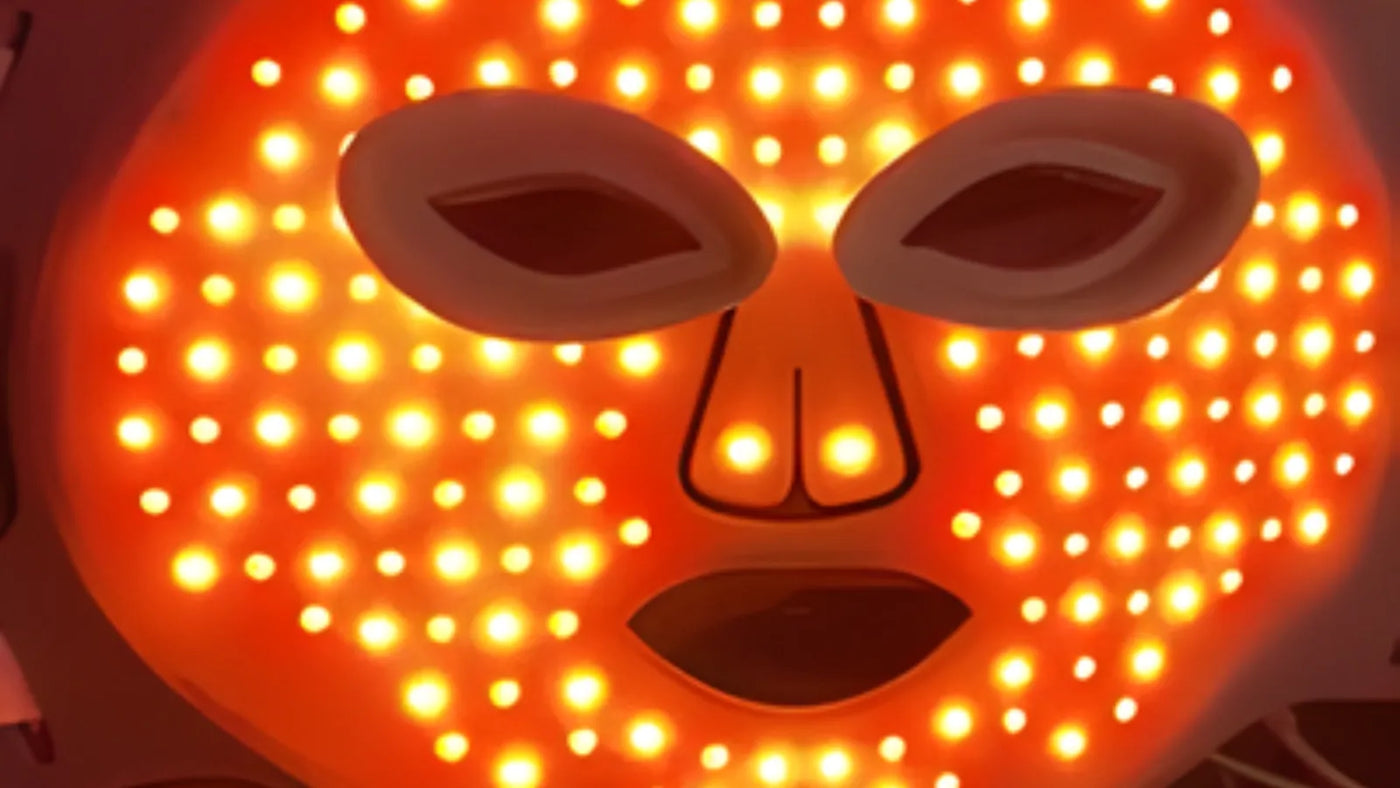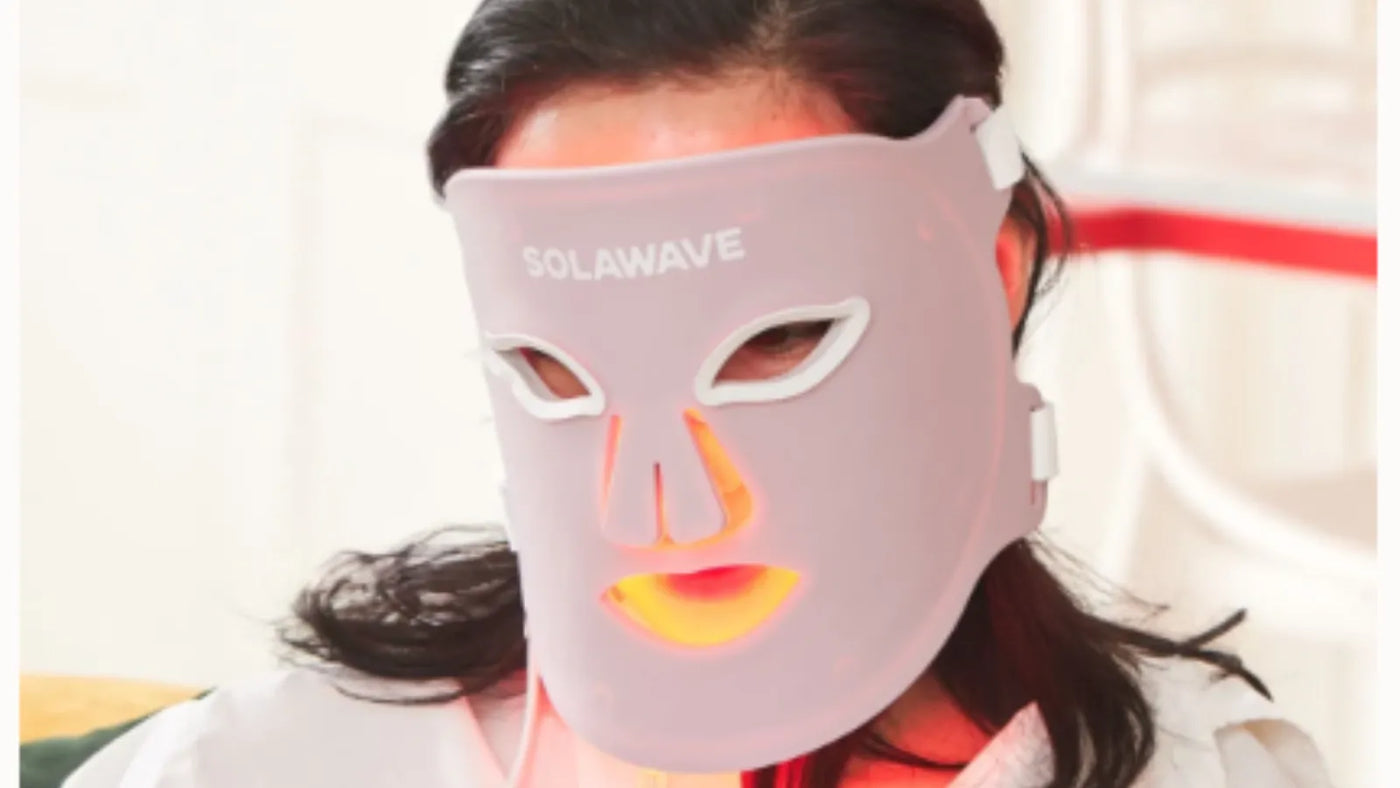

Types of LED Masks: Panel vs Flexible Masks and Their Specific Functions
In the world of advanced at-home skincare, LED therapy has rapidly evolved from a niche treatment in dermatology clinics to a mainstream ritual loved by celebrities and recommended by estheticians. This technological shift has empowered customers to take control of their skin health, achieving a radiant, youthful complexion from the comfort of home. As this technology becomes more accessible, a key question arises: which type of device is right for you?
This comprehensive guide will explore the different types of LED masks, focusing on the crucial panel LED masks vs flexible masks comparison. We’ll delve into their specific functions, the benefits of each design, and why the differences in their construction are so critical for achieving the results you desire.
Understanding LED Masks: Panel vs Flexible Masks
At its core, an LED (Light Emitting Diode) mask is a wearable device that delivers specific wavelengths of light energy deep into the skin. But how does light achieve this? It works on a cellular level. Think of your skin cells like tiny batteries. Over time, they lose their charge. The light from an LED mask acts as a recharger, boosting energy production within the mitochondria (the powerhouses of your cells). This gentle, non-invasive process triggers a cascade of benefits, including increased collagen production and reduced inflammation, all with zero downtime or risk of UV damage.
The two primary categories of these devices you'll encounter are:
- Panel (or Rigid) Masks: These are made from a hard plastic shell, designed to sit over the face in a fixed shape.
- Flexible Masks: These are crafted from a soft, pliable material like medical-grade silicone that contours precisely to your unique facial structure.
While both aim to deliver the benefits of light therapy, their design significantly impacts comfort, coverage, and ultimately, your results.
Key Differences Between LED Masks and LED Panels
Before comparing mask designs, it's vital to clarify the difference between an LED mask and an LED panel. This is a common point of confusion for those new to light therapy.
- LED Masks: These are wearable devices designed specifically for the face. Their primary advantage is providing direct, close-contact light exposure. This proximity is key for effectiveness, as it ensures the maximum amount of light energy (irradiance) reaches the skin cells. Their portability allows customers to enjoy a treatment while relaxing, reading, or moving around the house.
- LED Panels: These are larger, stationary devices that you sit or lie in front of. While they can treat broader areas, the light source is further away from the skin. Much like a lamp illuminates a room more faintly the farther you are from it, the energy from a panel diminishes over distance, potentially leading to a less potent and less targeted treatment.
For a focused facial rejuvenation regimen that fits seamlessly into a modern lifestyle, a mask is the more practical and efficient choice.
Types of LED Masks Available: A Comprehensive Guide
When exploring the types of LED face masks functions benefits, the material and fit are the most critical factors to consider. This is where the rigid vs flexible red light therapy masks debate truly comes into focus.
Panel Masks: Features and Benefits
Rigid panel masks were the first generation of at-home LED devices to hit the market.
- Features: They consist of a hard, uniform plastic structure that holds the LED bulbs in a fixed grid.
- Drawbacks: The one-size-fits-all design is their most significant flaw. Every face has unique contours, curves, and angles. A rigid mask cannot account for this, often leaving considerable gaps between the device and the skin, particularly around the nose, under the eyes, and along the jawline. These gaps mean that some areas of your face receive a powerful dose of light while others get very little, leading to uneven and disappointing results. They can also feel heavy and uncomfortable, discouraging the consistent use necessary for visible changes.
Flexible Masks: Features and Benefits
Flexible masks represent the next generation of at-home light therapy, thoughtfully engineered to address the shortcomings of their rigid predecessors.
- Features: Made from soft, hygienic, medical-grade silicone, they bend and mold to your individual facial contours like a second skin.
- Benefits: This superior, gap-free fit is the key to their effectiveness. It ensures that the therapeutic light is delivered uniformly and at the optimal distance across every part of your face—from the crow's feet at the corner of your eyes to the fine lines on your forehead. This maximized light penetration ensures that every skin cell reaps the full rejuvenating benefits. Products like the Red Light Therapy Mask from Solawave exemplify this advanced design, offering complete coverage and comfort.
Efficacy of LED Masks: Which LED Mask is Most Effective?
The effectiveness of an LED mask is a combination of technology, design, and user commitment. Here are the criteria that matter most:
- FDA Clearance: This is your primary assurance of safety and performance. At-home options like Solawave are FDA-cleared, meaning they have been rigorously tested and are confirmed to be safe and reliable for regular use. Many brands have launched without this crucial clearance, operating with murky safety protocols, so it is vital to purchase from a trusted, cleared brand.
- Wavelengths and Power: The most effective masks use clinically proven wavelengths. Red light (around 630nm) is excellent for targeting the skin's surface to stimulate collagen and elastin, reducing the appearance of fine lines. Near-infrared light (around 830nm) penetrates deeper to reduce inflammation, boost circulation, and accelerate skin healing. A device that combines both offers a comprehensive anti-aging treatment.
- Consistency: Results don't happen overnight. Achieving visible improvements requires commitment. The most effective routine involves consistent sessions. For the Solawave mask, these sessions are quick and easy—just 10 minutes, three to five times a week. A comfortable mask makes it easy to maintain this routine.
Are All LED Face Masks the Same?
The simple answer is no. This is one of the most important LED mask design differences which is better to understand. Beyond the panel vs. flexible build, they differ in several key areas:
- Technology and Design: Variations in the number of bulbs, the specific wavelengths used, and FDA clearance status create a vast spectrum of quality and safety.
- Price Points and Accessibility: While it may be tempting to opt for a cheaper alternative, price often reflects the quality of materials, the research and development invested, and crucial safety certifications. An LED mask should be viewed as a long-term investment in your skin's health.
- Personalization of Treatment: A truly effective skincare routine is multi-faceted and tailored to your specific needs. You can build a comprehensive regimen with specialized tools. For example, use a Red Light Therapy Face Mask for overall rejuvenation, and supplement it with a red light therapy eye mask for concerns around the delicate eye area. For blemishes or stubborn lines, a red light therapy wand offers a highly targeted approach.
- Synergistic Skincare: To enhance the benefits of light therapy, it's best to pair your devices with high-quality topicals. For instance, using a product like the LightBoost Collagen Caffeine Eye Cream before your eye mask can amplify results. Similarly, applying a nourishing moisturizer like the Lightboost Face and Neck Cream after a mask session helps lock in hydration. For a lightweight option, the LightBoost Niacinamide Face and Neck Serum can brighten and smooth the skin. Using a conductive gel like the LightBoost Red Light Therapy Hyaluronic Serum is essential with the wand to ensure its galvanic current can work effectively.
About Solawave
Solawave is a 30+ award-winning skincare brand dedicated to making advanced beauty technology accessible for at-home use. We focus on integrating clinically proven light therapy with patented skincare ingredients to create rituals that are effective, science-backed, and, most importantly, FDA-cleared. Our mission is to provide customers with the tools they need to achieve their best skin, blending innovation with user-friendly design to deliver tangible results.
Conclusion: Choosing Between Panel and Flexible LED Masks
When investing in an at-home LED therapy device, your goal is to achieve the best possible results safely and comfortably. While rigid panel masks can offer a basic introduction to light therapy, their design limitations can compromise treatment quality and lead to inconsistent outcomes.
For customers seeking maximum efficacy, comfort, and even light distribution, a flexible silicone mask is the superior choice. Its ability to conform perfectly to your face ensures every cell reaps the rejuvenating benefits of every single session. An FDA-cleared, high-quality flexible mask is an exceptional choice for anyone serious about elevating their skincare ritual.
Explore the full collection of science-backed skincare tools in our shop all collection and follow us on Instagram for tips from our community of experts and enthusiasts.
FAQs
What is the difference between an LED mask and an LED panel?
An LED mask is a wearable device designed to fit directly onto the face for a targeted treatment, offering convenience and direct skin contact. An LED panel is a larger, stationary device that you sit in front of, treating a broader area from a distance. Masks generally provide a more efficient and direct light therapy session for facial concerns due to their close proximity to the skin.
What are all the different types of masks?
The two main types of LED face masks are panel (rigid) and flexible. Panel masks are made of hard plastic and have a fixed shape, which may not fit all face shapes evenly. Flexible masks are made from soft materials like silicone that contour closely to your facial features, ensuring full, even light distribution for better results.
Which LED mask is most effective?
The most effective LED mask is one that is FDA-cleared for safety, uses clinically proven wavelengths of light (like red and near-infrared), and fits the face well. Flexible silicone masks are often considered more effective because they conform to the skin, minimizing gaps and maximizing light absorption. Consistent use, typically 10 minutes per session several times a week, is also key to achieving the best results.
Are all LED face masks the same?
No, all LED face masks are not the same. They vary significantly in their design (rigid vs. flexible), technology (the number and type of LED wavelengths), material quality, and safety certifications like FDA clearance. Price and effectiveness vary greatly, so it's important to choose a reputable, science-backed brand.





















